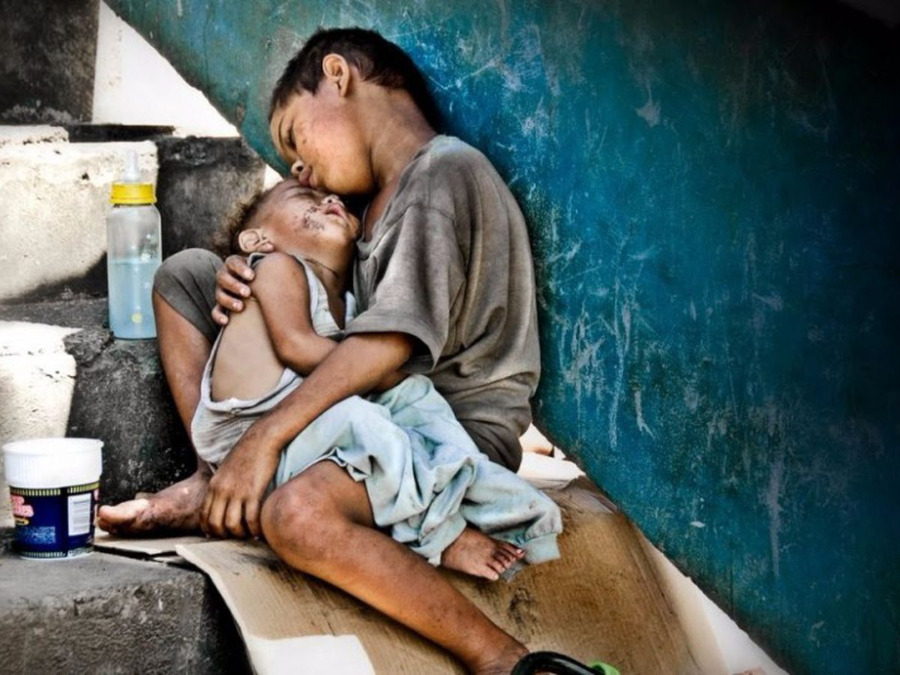The 'invisible' children
Unidentified, ill-estimated and 'unwanted' children, dwelling on urban streets, face perpetual destitution in want of policy intervention; write Vijender Kumar & Richa Saxena

Urban street children remain largely invisible and do not evoke commensurate responses from all stakeholders. They are among the most vulnerable groups with limited access to protection, education, and healthcare. The United Nations Children's Fund refers to street children as children in difficult situations. In cities, street children are mostly found near busy traffic junctions, railway stations, and religious places, among others. They are exposed to a much higher degree of risks and hazards. The COVID-19 pandemic has further increased their vulnerability and created the need for urgent action from all stakeholders.
A study conducted by Save the Children (2018) highlighted that some working children who live with their families on streets and in slum areas suffer from a host of psychosocial issues. These children feel abandoned by society. In a conversation with the authors, street children residing in different parts of Delhi expressed their feelings around perpetual destitution, lack of familial networks, absence of social protection measures, and lack of basic necessities for a decent living. As a result, these children find themselves suffering from prejudice, discrimination, and inequality. They also identify themselves as "unwanted" children.
India has implemented various policies, schemes, and initiatives for ensuring children's access to health, education, and safety. These include Child Protection Services Scheme (erstwhile Integrated Child Protection Scheme 2009); National Policy for Children (2013); National Policy for Reduction of Drug Demand (2014); National Action Plan for Children (2016); National Health Policy (2017); and Samagra Shiksha (2018).
Despite these national policies/schemes, there are several challenges and gaps restricting access to the rights and entitlements of urban deprived children. First, in many States, the policies and action plans do not specify an official definition of street children. Second, India does not have a specific national policy for urban deprived children, including street children. Except for Samgra Shiksha, no policy or scheme directly identifies urban deprived children. They are identified as a subset of vulnerable children such as those who are out-of-school or engaged in labour — a major category that comes under children in need of care and protection, defined under the Juvenile Justice (Care and Protection of Children) Act, 2015. Third, there is a lack of consistent and well-accepted estimates about the number of street children in India.
Census 2011 estimated 3,594 homeless children in Delhi, while Save the Children (2011) estimated 50,923 street children in Delhi. A more recent estimate by Save the Children (2018) estimated 81,235 street children in the age group of 0-6 years. Given the divergence in data, the accuracy of these estimates comes under question. Additionally, data on crime against street children or underage street children saved from sex trafficking are lacking.
Accurate information about street children and their profiles is crucial for ensuring holistic planning and budgeting. As per the Child Protection Services scheme, the quantum of maintenance grant for children residing in Child Care Institutions (CCIs) is fixed at Rs 2,160 per child per month and Rs 2,000 per child per month for non-institutional care of children in need of care and protection. Maintenance grant per child needs to be increased to enhance the efficiency of CCIs and non-institutional care.
Inadequate budgetary allocation for children's welfare, including for institutions like CCIs and DCPUs, hampers their functioning. Staff vacancies in CCIs, DCPUs, and police stations limit the effectiveness of the said institutions, especially regarding the implementation of children's welfare interventions. Staff often lack the capacity to engage with urban-deprived children. Their awareness of the provisions of various acts and policies related to children's welfare and various welfare initiatives needs capacity building.
Targeted and collective effort for uplifting the living conditions of these children and their families is urgently needed. States need to act on the push and pull factors that compel children to become street dwellers. Challenges of migrants, especially livelihood issues, need focus. This calls for policies and schemes with specific implementation guidelines that can directly and specifically ensure access to essential services for urban deprived children. A higher budget for children's welfare, with special provisions for additionally vulnerable children, should also be considered. State governments, in collaboration with Civil Society Organisations (CSOs), can organise training sessions and workshops for officers of CCIs, DCPUs, and other relevant institutions to create awareness and facilitate skill development. Further, CSOs can also be engaged in developing and strengthening child protection institutions and committees at the ward and district levels.
Lastly, there is a need to conduct regular surveys to obtain accurate estimates of urban deprived children, especially street children. States and CSOs can conduct vulnerability mapping of these children and their families to identify the hotspots for outreach activities such as organisation of health camps and engagement with parents for their wards' school enrolment. Studies also need to be undertaken for assessing the challenges with respect to providing these children access to their rights and entitlements in health, education, and other areas. Such studies can pave the way for more effective design and implementation of targeted interventions, thereby making urban-deprived children more "visible" to all stakeholders and society at large.
Vijender Kumar is Monitoring & Evaluation Lead at the Development Monitoring & Evaluation Office, NITI Aayog; Richa Saxena is a Senior Research Associate at S.M. Sehgal Foundation. Views expressed are personal.



